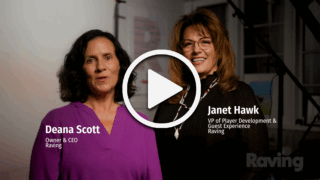
Pick up a pen.
Place it in your opposite hand.
Draw a circle.
Write your name.
How does that feel?
Do the muscles in your fingers tense? Do you apply more pressure to exert more control? Relax your grip. Release your concentration a bit. Think of the end goal of the circle and how your name should look on the page. Try again.
In this exercise, you are not only training your hand; you are training your mind to make a shift. With apologies to my teachers, I used to do this extensively in class. I’d write my notes using the alternate hand. Practice these shifts enough, and you will feel your brain switching sides. Practice this more, and you will learn to relax as you shift to something new. Exerting more control does not allow for better penmanship.
Becoming adept at placing the end goal in your mind and letting the process flow to improvement doesn’t make a meeting go more quickly. Again, apologies to my colleagues for seemingly being inattentive during a meeting. This exercise will ultimately train your mind and sensibilities to shift more easily from one method of approaching problems to another.
As marketers, we need to shift our approach to better connect with our customers. Loyalty 360 demands we reinvest in our relationships using data differently. No longer are customers content with a linear relationship of carrots and sticks.
What a linear relationship looks like:
- A customer spends or makes a trip. If the customer’s activity registers positively with internal business goals, incentives are tendered.
- If sustained trips and spend are meaningful, access to heightened privileges and benefits are proffered.
- If trips or spend stops, the offers and privileges stop.
- Eventually, loyalty is bought and sold.
- If the deal down the street is better, the customer moves on.
This isn’t loyalty. This is a transactional relationship. This is bad. Offer inflation is bad. Entitlement to unearned benefits is bad. Transactional relationships are built upon a false premise of buying the business.
Loyalty 360 aims to look at the customer as a human being with wants, needs, and desires. Investing in the reason and emotion that accompanies a purchase decision extends the boundaries of that decision. This deepened engagement draws both business and customer together. This “relationship” weathers economic downturns, increased competition, and positions the customer to be a product champion to his or her peers.
The first step to transitioning from a linear relationship with your customers is to remold how we use data to determine how we reinvest in our customers.
Step One: Rip the Pen from Your Dominant Hand
The dominant hand is a reliance on points, tiers, and direct mail as the cornerstone of reinvestment. Set this aside. We need to see our data apart from worth and frequency segmentation as measured by trips and spend. That’s hard to do. Our dominant hand tells us to work from left to right. We measure, segment, and send out offers. This can still occur. But we must do more to better engage in a Loyalty 360 environment.
Step Two: Add Triggered Touch Points
Look at clusters of behaviors. Are there patterns worth recognizing? Look at the pace to which each customer is traveling towards tiered card earning goals. How can these goals be broken down into smaller earning milestones worth celebrating? Look at what is behind the passion of participation. Does a particular game or way a person plays have attributes worth leveraging to gain interest in the property?
Step Three: Focus on the End Goal
The end goal is a sustained and sustainable relationship with our customer. This is a mix of touch points that clearly recognize and reward behaviors and surprise and delight them based on our growing knowledge of how they like to be treated.
Imagine “Dana the Demi-Diva.” She signs up for a card. We know that our acquisition process is in play until she uses her card at least three times. What triggered touch points would help indoctrinate her to the loyalty program? As she drops into the monthly cadence of direct mail offers, how can we personalize our communications based on the choices that she makes? This is not giving her more steakhouse coupons if she dines once. These are pop up touch points based on her menu selections and the days of the week she chooses to spend an evening at the property. As she matures through the program, how do we recognize the pace to which her loyalty grows? What milestones are important to us and should be celebrated? Few casinos engage uniquely with Dana based on how she plays or what she plays. Can we entice her with predictive analytics to further engage with other like games at the property? Shifting gears into Loyalty 360 mode takes us from a linear progression of offers to one of anticipating wants and desires. By shifting our focus, can we surprise and delight her with recognition and ways to engage she will not experience elsewhere?
So, the first step is one of perception. Place the pen in your other hand. Be prepared for a new way of seeing your customer and the way she presents herself in a stream of data.







